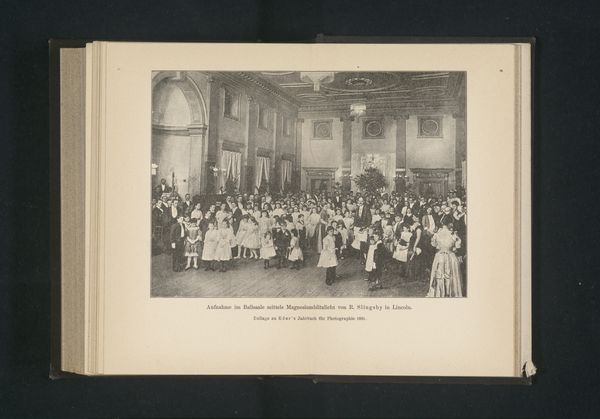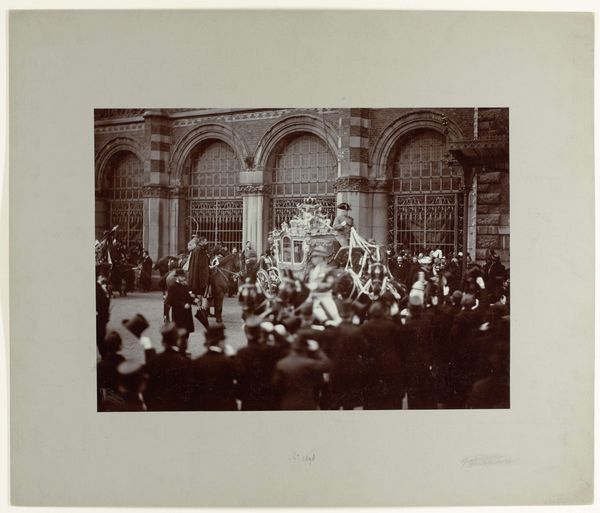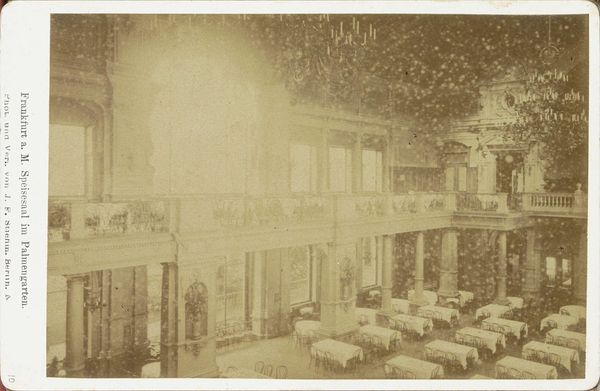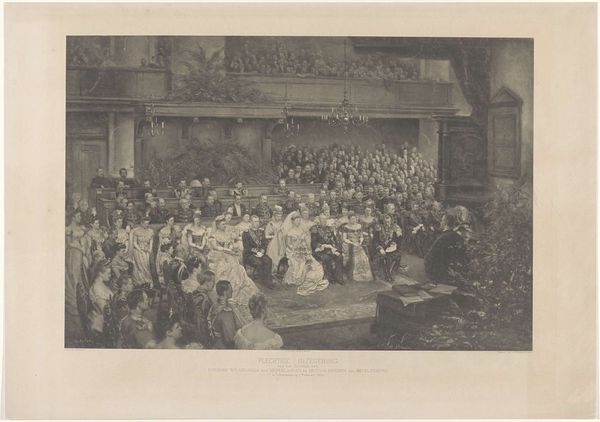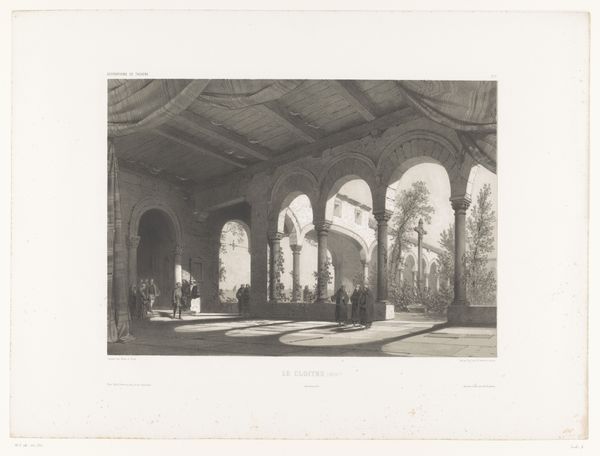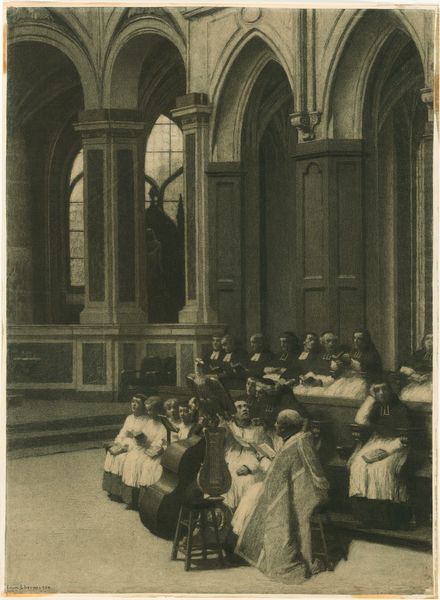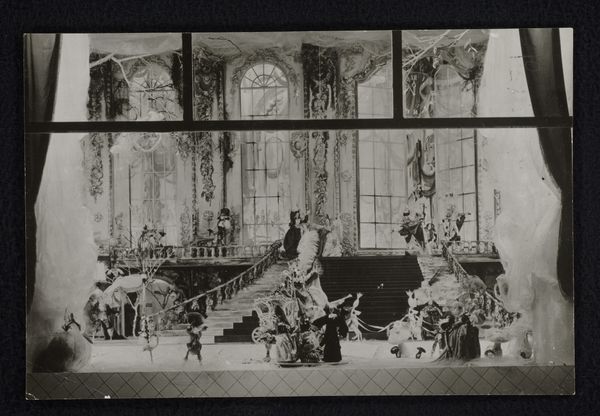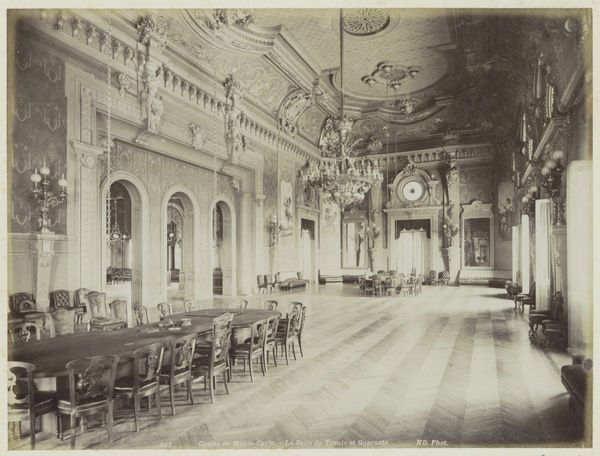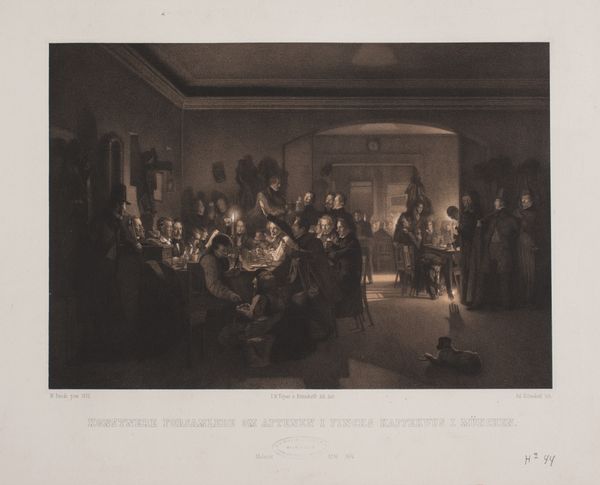
The Refectory of the Imperial Asylum at Vincennes 1858 - 1859
0:00
0:00
photography, gelatin-silver-print
#
portrait
#
16_19th-century
#
film photography
#
photography
#
historical photography
#
gelatin-silver-print
#
men
#
genre-painting
#
realism
Dimensions: 34.2 x 42.5 cm (13 7/16 x 16 3/4 in.)
Copyright: Public Domain
Charles Nègre made this photograph, "The Refectory of the Imperial Asylum at Vincennes," using a process called the calotype, one of photography’s earliest forms. The calotype was special because it produced a paper negative, allowing for multiple prints. Nègre would have coated paper with silver iodide, exposed it in the camera, and then developed it to reveal the image. This technique rendered a softer, more atmospheric effect compared to other photographic methods of the time. Look at how the light diffuses through the high windows, creating a hazy ambience in the refectory. What I find striking is how the technological innovation of photography, a decidedly modern medium, is used here to depict a social reality of labor and confinement. The rows of seated figures, presumably residents and staff, are captured in a moment of communal dining, yet the image subtly hints at the social structures and power dynamics at play within the asylum. It is a reminder that the making of an image, like any form of production, is deeply intertwined with the social and political context in which it's created.
Comments
No comments
Be the first to comment and join the conversation on the ultimate creative platform.

